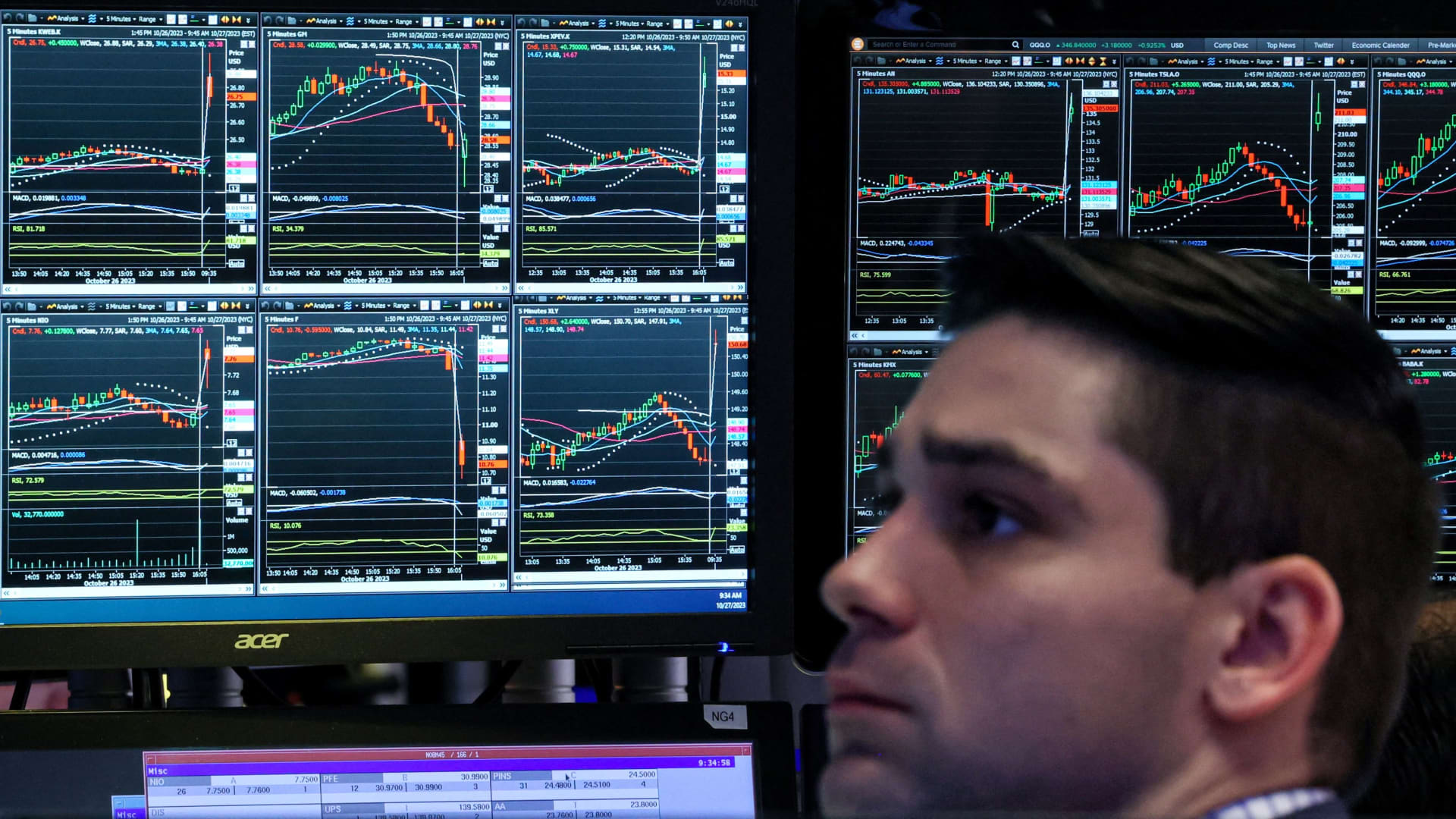Despite indicators like U.S. credit card debt pointing toward financial and economic pressures, another global financial crash is not imminent, UBS chief U.S. economist Jonathan Pingle believes.
U.S. credit card debt soared to $1.08 trillion in the third quarter of 2023, data from the Federal Reserve Bank of New York showed earlier this month. This has sparked concerns about what rising debt levels, brought on at least in parts by higher prices, could mean for the overall economy.
However, Pingle told CNBC’s Joumanna Bercetche on Wednesday that it is difficult to view the data as a systemic risk.
“I don’t think we’re facing the next GFC [global financial crisis],” he said on the sidelines of the UBS European Conference.
Credit tightening does play a role when it comes to the lag of Federal Reserve monetary policy filtering through to the economy, Pingle suggested. “We are still waiting to see those credit headwinds dampen activity in 2024,” he said.
Credit tightening tends to precede loan growth by several quarters, so the full impact is not yet clear, he explained.
Several other factors also come into play, Pingle noted. This includes concerns about regulation in the wake of the collapse of Silicon Valley Bank, which raised alarms about the health and stability of the banking sector and prompted a crisis in regional banking, and “rapid” interest rate hikes, he said.
The Federal Reserve began hiking interest rates in March 2022 in an effort to ease inflation and cool the economy. Eleven rate hikes have been implemented since then, with the target range for the fed funds rate rising from 0%-0.25% to 5.25%-5.5%.
The Fed chose to leave rates unchanged at both of its last two meetings, and Tuesday’s lower-than-expected reading of the October consumer price index prompted traders to all but erase the chances of rates being hiked at the central bank’s December meeting.
The CPI was flat compared to September and reflected a 3.2% rise on an annual basis, while the so-called core-CPI, which excludes food and energy prices, came in at 4% year over year. This marked the smallest rise since September 2021.
“It’s great news for the Federal Reserve in their quest to restore price stability,” Pingle told CNBC on Wednesday. Still, they are “not out of the woods yet” he added, saying that there was “still a ways to go” before the Fed reached its 2% inflation goal.
A trend of disinflation is however in place, Pingle said, and if the Fed can slow the economy, it could make strong progress toward its inflation goal.
“We think its probably going to get to 2 next year. It’s already falling faster than the Fed expects,” he said.
However the economy including the labor market will have to weaken further for inflation to steadily remain around 2%, Pingle expects.
“The path to two and a half we think is pretty clear, but sort of that last leg down we do think is going to take some weakening in the labor market,” he said.
In its 2024-2026 outlook for the U.S. economy, which was published Monday, UBS said it expected unemployment to rise close to 5% next year and for the economy to enter a mild recession. UBS is anticipating a contraction of the economy by around half a percentage point in mid-2024, its report suggested.
A looming recession has been a key fear among investors throughout the Fed’s rate-hiking cycle as many have been concerned about rates being hiked too high, too quickly.
They have therefore been hoping for an imminent end to rate hikes and hints about when the Fed may start cutting rates again.
UBS foresees significant rate cuts for 2024, predicting that rates could be cut by as many as 275 basis points throughout the year.
Rates would be cut “first to prevent the nominal funds rate from becoming increasingly restrictive as inflation falls, and later in the year to stem the economic weakening,” the Swiss bank said.
Rate cuts will therefore be a two-step process Pingle explained, and could start relatively early in the year.
“As early as March they should probably start at least calibrating the nominal funds rate,” he said, whereas the second stage would likely begin when unemployment starts rising.
